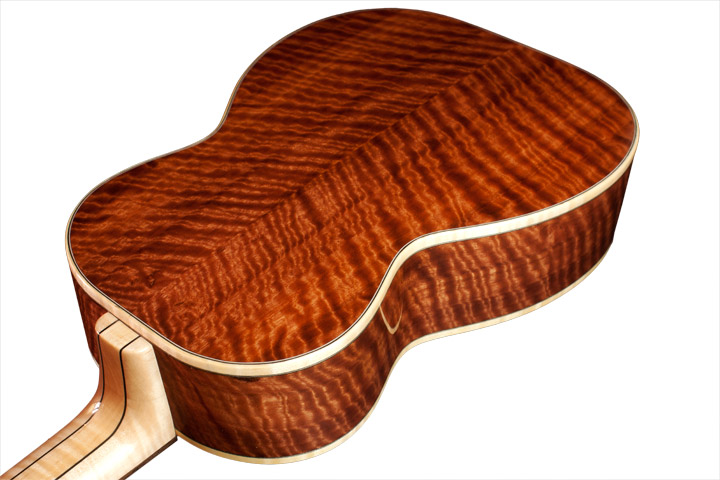Thanks folks
These timbers were allready outside, and I'm not talkin about the rainforest...
they're not goin back...
Outside's for stone and renewable local timbers or materials to me.
Theirs quite a lot of beautiful afrormosia I have, all has screw and nail holes, and the staining to prove it...
wouldn't show that off, as I don't like that style of thing though.
I will find a use for it...It used to be from a fancy building in town, and these lengths were on my stairs in town for years :lol:
I can find the nicest lengths and put a veneer where needed, and I won't be cutting any corners with the inside either, like with that well known brand

I might use some of this for multi piece backs and sides.
If you want to see impressive multi-piece sides, not laminated... look at Howard Klepper dovetail madness.
You can make any dense wood do what you want it to, if you have made it thin enough, have thin CA on hand
bending forms, steel slats, heating blankets and so on..
Just look at Brazilian rosewood back and side sets, or coco ect
These sets can cost 1000 easily and they're ready to explode.
Or if you want to get a fright, look at the African blackwood sets.
I have not tried to buy any timber like rosewoods as it was obvious from the get go, that it's cheaper to
find a supplier of a billet, or whatever.
I have heard of these sleepers before though...
At any rate I could buy a bandsaw for the price of the timber in the yards, so I may go on the hunt sometime
for some of this stuff.
Guessing those folks chosen the unsuitable "boules" ( :wink: ) for these sleepers
as the straight grain stuff was destined for plankin'
Unless those trees are just huge, and just really abundant ?
Thanks folks, reading with much interest
Tom





